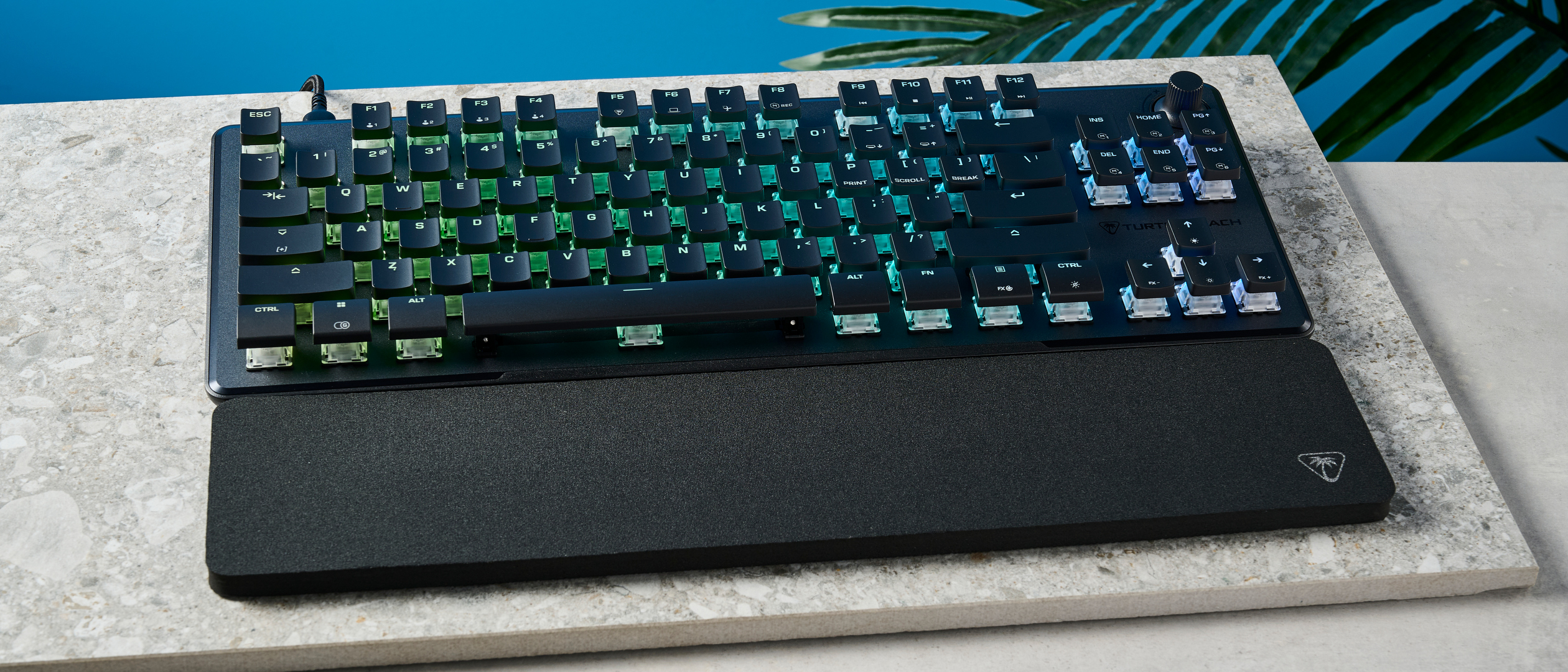Tom's Guide Verdict
The Turtle Beach Vulcan II TKL Pro is built really well, and its Hall Effect magnetic switches let you adjust each key’s actuation points, making it great for FPS and RPG titles. It offers a good typing experience too, but it’s let down by cheap keycaps that are prone to getting shiny, and the gaps between the keys may lead to missed inputs.
Pros
- +
Premium construction
- +
Hall Effect switches
- +
Typing experience… with a caveat
- +
Per-key RGB lighting
- +
Detailed companion software
Cons
- -
Keycaps prone to getting shiny
- -
Missed inputs due to gaps between keys
- -
Cheap feeling wrist rest
Why you can trust Tom's Guide
You’ve probably come across the Hall Effect without even realizing it. It’s how your MacBook knows when the lid is closed. Hall Effect magnetic switches make for an incredible gaming experience, and if you’re a competitive gamer, you’ll want the best gaming keyboard with magnetic switches. But while the Turtle Beach Vulcan II TKL Pro should boast an incredible gaming performance, that’s only in theory.
This keyboard has a robust build, and its magnetic switches let you adjust the actuation point of every single key. The per-key RGB lighting is fully customizable via the Vulcan II TKL Pro’s companion software, adding flare to your setup — all at $149.
But the keyboard is let down by cheap ABS keycaps that double as fingerprint magnets, and the gaps between the keys may result in missed inputs — and that’s where the keyboard loses its competitive edge.
For the full breakdown, read my Turtle Beach Vulcan II TKL Pro review.
Turtle Beach Vulcan II TKL Pro review: Specs
| Specs | Turtle Beach Vulcan II TKL Pro |
|---|---|
| Price | $149 / £143 |
| Switches | Hall Effect magnetic switches |
| Keycaps | ABS |
| Mount type | Aluminum top plate |
| Layout | 75%, 83 keys |
| Operating system | macOS, Windows |
| Backlighting | Per-key RGB |
| Polling rate | 1,000Hz |
| Paired devices max | 1 |
| Connectivity | Wired only |
| Measurements | 15.62 x 6.18 x 2.2 inches |
| Weight | 1.45lbs (660g) |
| Colors | Black, white |
Turtle Beach Vulcan II TKL Pro review: Cheat sheet
- What is it? A 75% wired keyboard with Hall Effect magnetic switches
- Who is it for? For casual and competitive gamers
- How much does it cost? The Turtle Beach Vulcan II TKL Pro is available for $149 / £143
- What do we like? Its premium construction, Hall Effect switches, per-key RGB lighting, detailed companion software, and typing experience
- What don’t we like? The gaps between the keys affect gaming and typing, the wrist rest feels cheap, and the keycaps are prone to getting shiny
Turtle Beach Vulcan II TKL Pro review: The ups
The Turtle Beach Vulcan II TKL Pro is built robustly, with Hall Effect magnetic switches that let you adjust each key’s actuation point, and it has per-key RGB lighting that can be customized via user-friendly companion software.
Premium construction
Sporting a 75% tenkeyless layout, the Turtle Beach Vulcan II TKL Pro measures 15.62 x 6.18 x 2.2 inches and weighs 1.45lbs, so it’s portable and doesn’t take up much space on your desk. Gaming keyboards can be heavy, like the MelGeek CYBER01 (2.65lbs) and the Corsair K65 Plus Wireless (2.02lbs). I like the portability of the Vulcan II TKL Pro, and it can be really handy for competitive gamers who participate in tournaments.
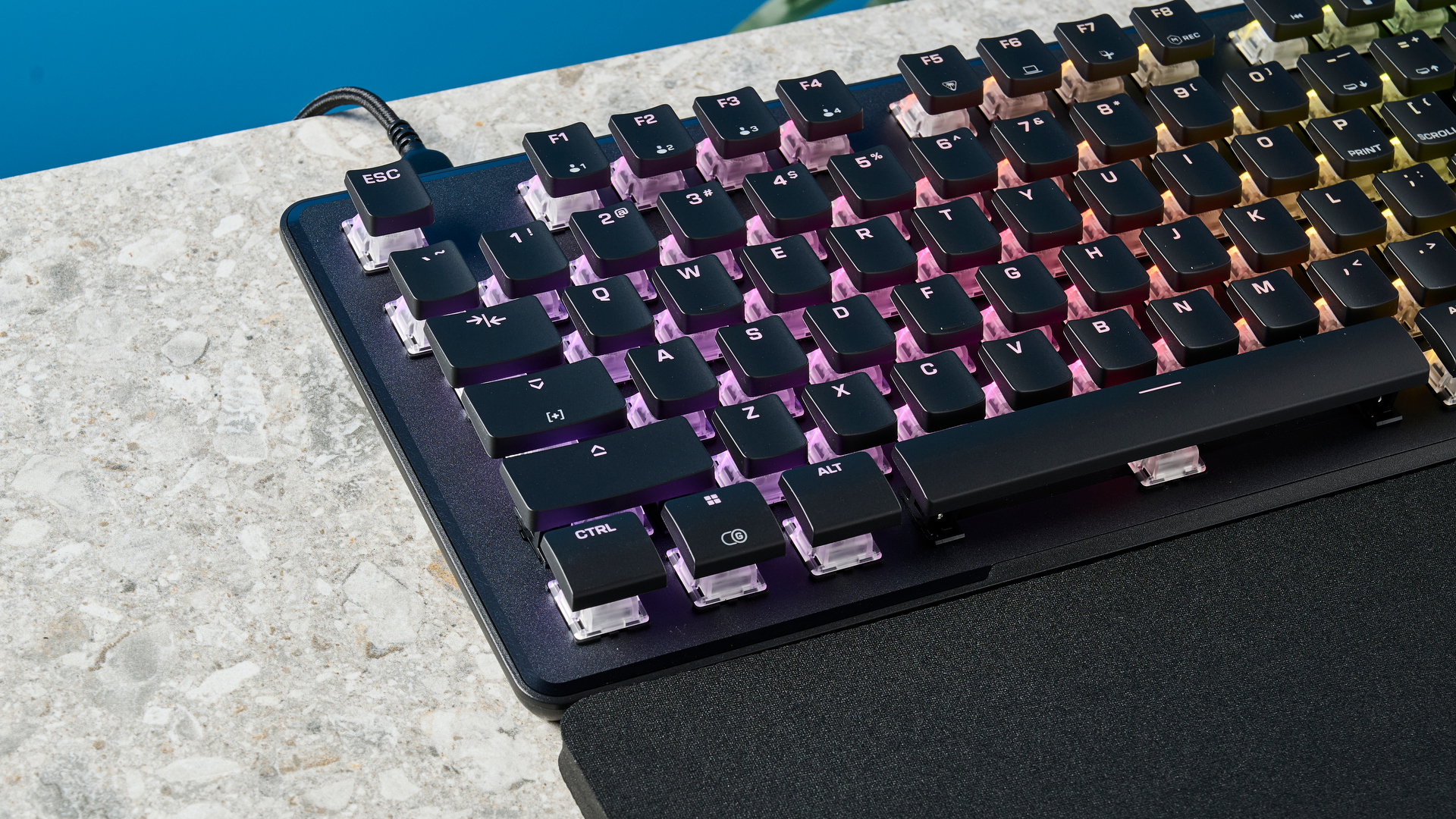
As for the keyboard’s build quality, there’s only one word to describe it: robust. Even though it’s lightweight and thin, there’s no flex. Available in black and white, it features an aluminum top plate, a plastic chassis, and shine-through ABS keycaps over Hall Effect magnetic switches.
I usually prefer PBT or MDA keycaps, like the ones found on the Keychron V1 ($94) and the Gamakay LK75 ($129), as they don’t wear down quickly and their colors remain true-to-life over time. But I do like the matte finishing on the Vulcan II TKL Pro’s ABS keycaps. While the keys feel good under my fingertips, their placement interferes with gaming and typing (more on that later).

In the top right corner, there’s a textured volume wheel which can be pressed to mute your machine. However, this wheel can’t be remapped, which is a shame as I can remap the Keychron V1’s metallic knob.
Hall Effect switches
Now onto the main event. These Hall Effect magnetic switches are the same as the ones on our favorite gaming keyboard, the Corsair K70 Max ($230). The Hall Effect operates by altering an active electrical field when a magnet passes through it, without any need for physical contact to activate the switch. Essentially, the sensors on the PCB can detect the depth of the switch press, enhancing the responsiveness. And for this reason, Hall Effect switches are excellent for gaming.
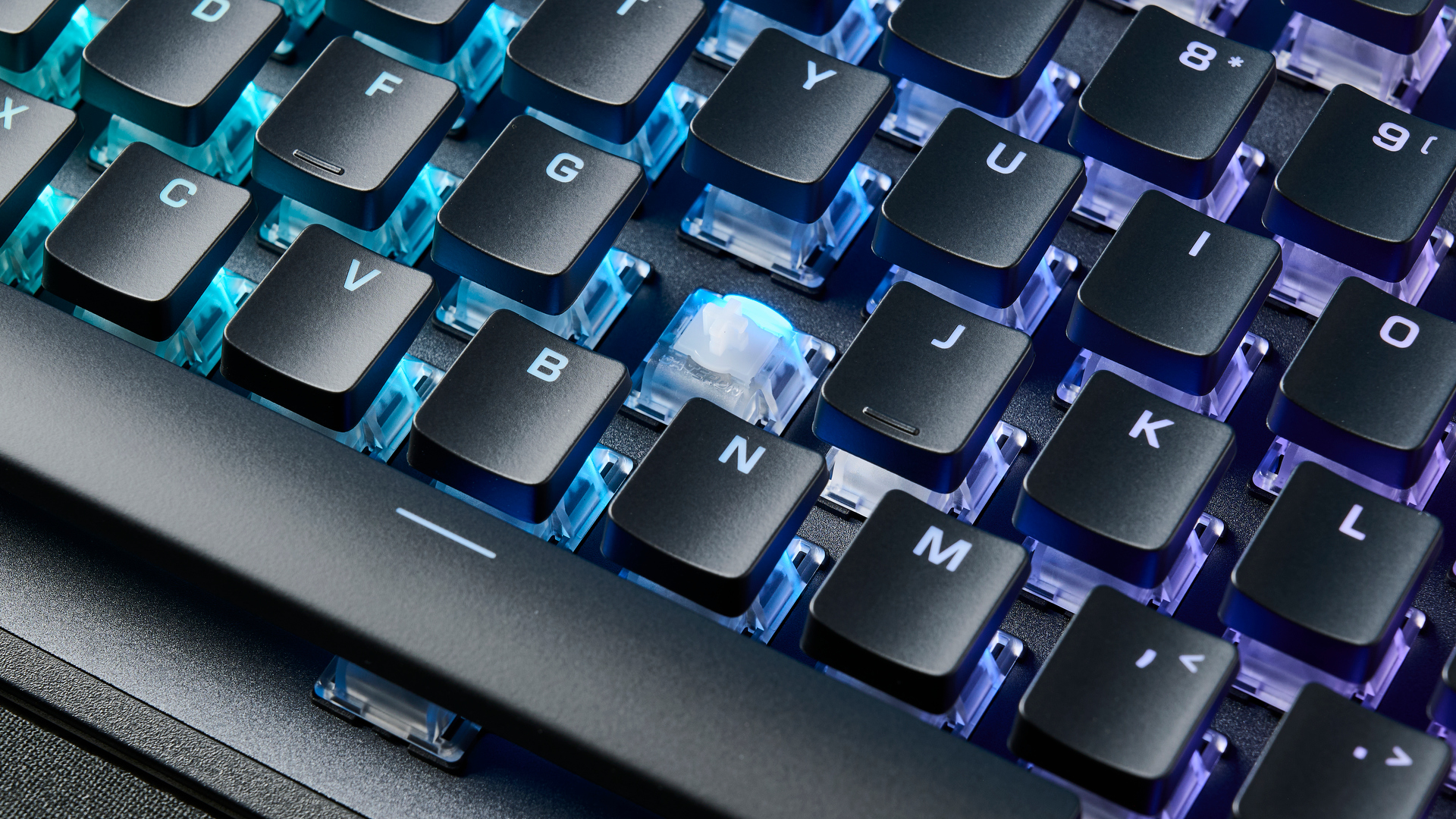
Turtle Beach reports that this keyboard has a 1,000Hz polling rate. But you can enhance the keyboard’s gaming performance by altering the actuation point of every single key. The switches I tested have a default actuation point of 1.5mm. The lower the actuation point, the more sensitive the key. Turtle Beach says the keyboard has an adjustable travel range of 0.1-4mm, so you can customize the keyboard to your liking.
For Counter-Strike: Global Offensive, I lowered the actuation points of the WASD keys to 0.5mm each, so that my movements could register faster. You can also configure up to three actuation points to trigger different actions. For instance, in CS:GO, I set the first actuation point — the softest press — to equip a grenade, and pressing it further triggered the second actuation point with which I aimed, and the final actuation point threw it. Now that’s clever. This will be a big selling point for competitive gamers.
Typing experience
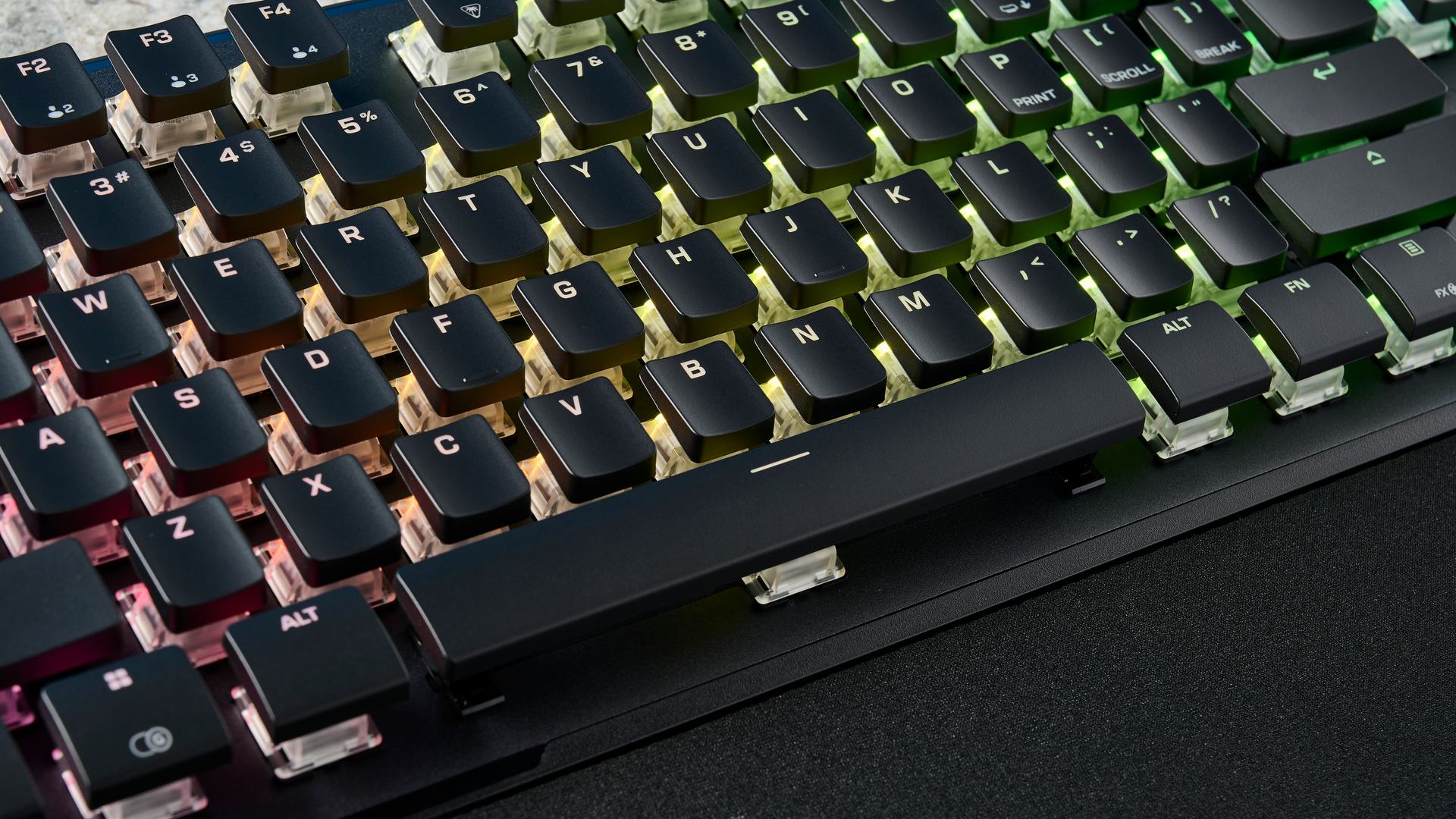
I’ll be honest, when I was writing this review, I wasn’t sure whether to put the typing experience as an up or a down. I like the keycaps, and the Hall Effect switches make every keystroke buttery smooth. But my typing accuracy definitely suffered, and that’s down to the gaps between the keys (more on this soon).
| Keyboard | Type test speed (WPM) | Type test accuracy |
|---|---|---|
| Gamakay LK75 | 95 | 94.32% |
| MacBook Air M2 built-in | 91 | 92.06% |
| Lemokey X3 | 90 | 92.01% |
| Cherry KW 7100 Mini BT | 90 | 88.05% |
| Turtle Beach Vulcan II TKL Pro | 87 | 86.07% |
| Nikita’s overall averages (all keyboards) | 82.5 | 91.31% |
I prefer typing on mechanical keyboards, as can be seen in my 10fastfingers.com test results above. I struggled to type on the Vulcan II TKL Pro. It’s not awful, and it’s not even close to my worst score. The typing experience is good — but this is primarily a gaming keyboard anyway.
Per-key RGB lighting

The Turtle Beach Vulcan II TKL Pro’s per-key RGB backlighting is perhaps the most detailed and customizable lighting I’ve seen. Via Swarm II, its companion software, you can choose from eight preset effects, and even create your own custom effects.
But that’s not all. The presets themselves are editable, and not only can you change each key’s color, you can also adjust the hue, saturation and brightness, and the effect’s speed too.
Detailed companion software
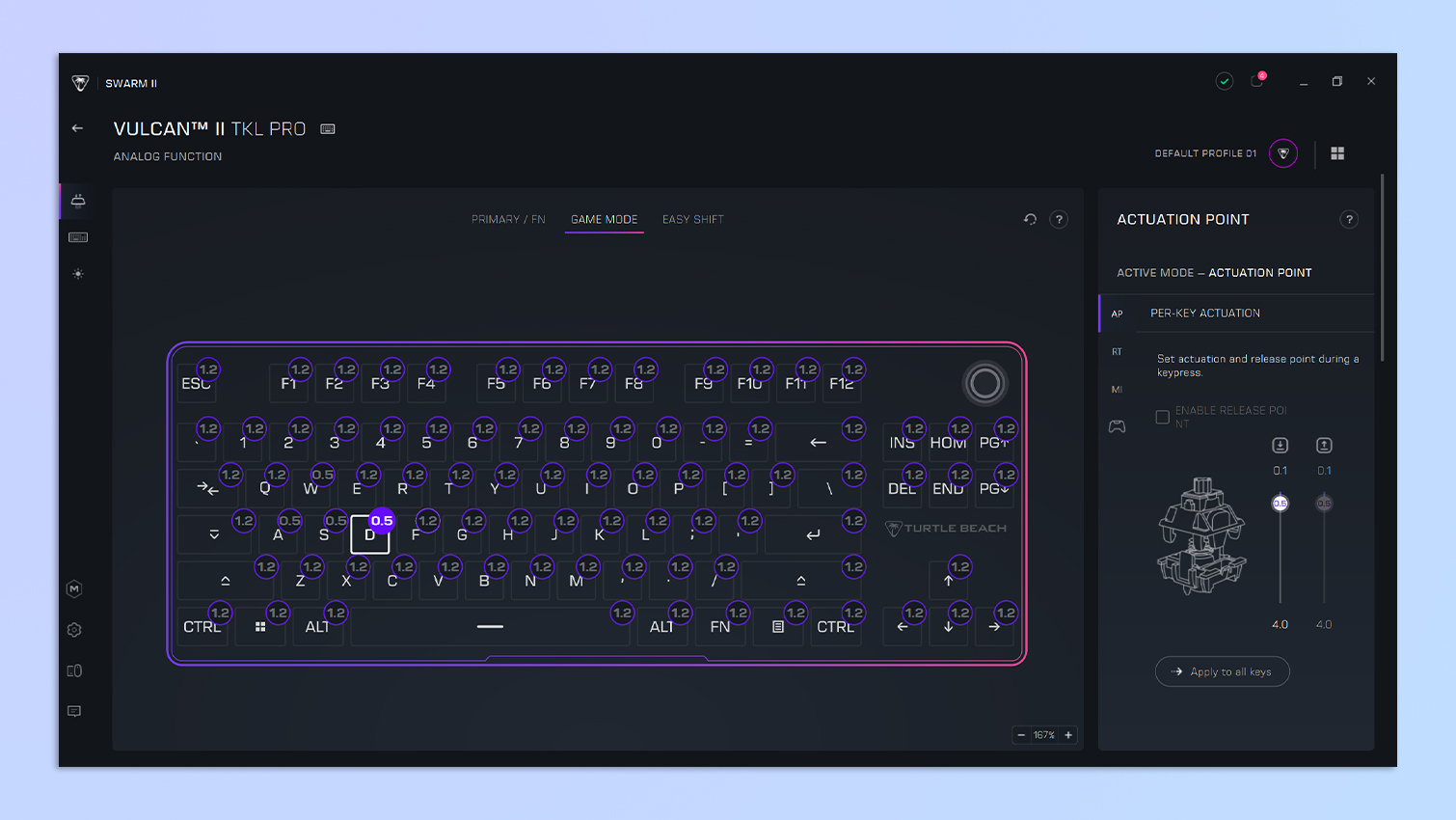
Turtle Beach Swarm II, available for Windows only, is the most detailed companion software I’ve used so far. It’s also very user-friendly as it offers explanations for all the customizable settings. You can do the basic stuff, like remap keys and program macros, but you can also change the actuation point of every key and alter key sensitivity.
Turtle Beach Vulcan II TKL Pro review: The downs
The list of the Turtle Beach Vulcan II TKL Pro’s cons might not be as lengthy as its pros, but missed inputs can make competitive gamers lose their edge. The keycaps are also fingerprint magnets, and the cheap wrist rest only adds insult to injury.
Missed inputs
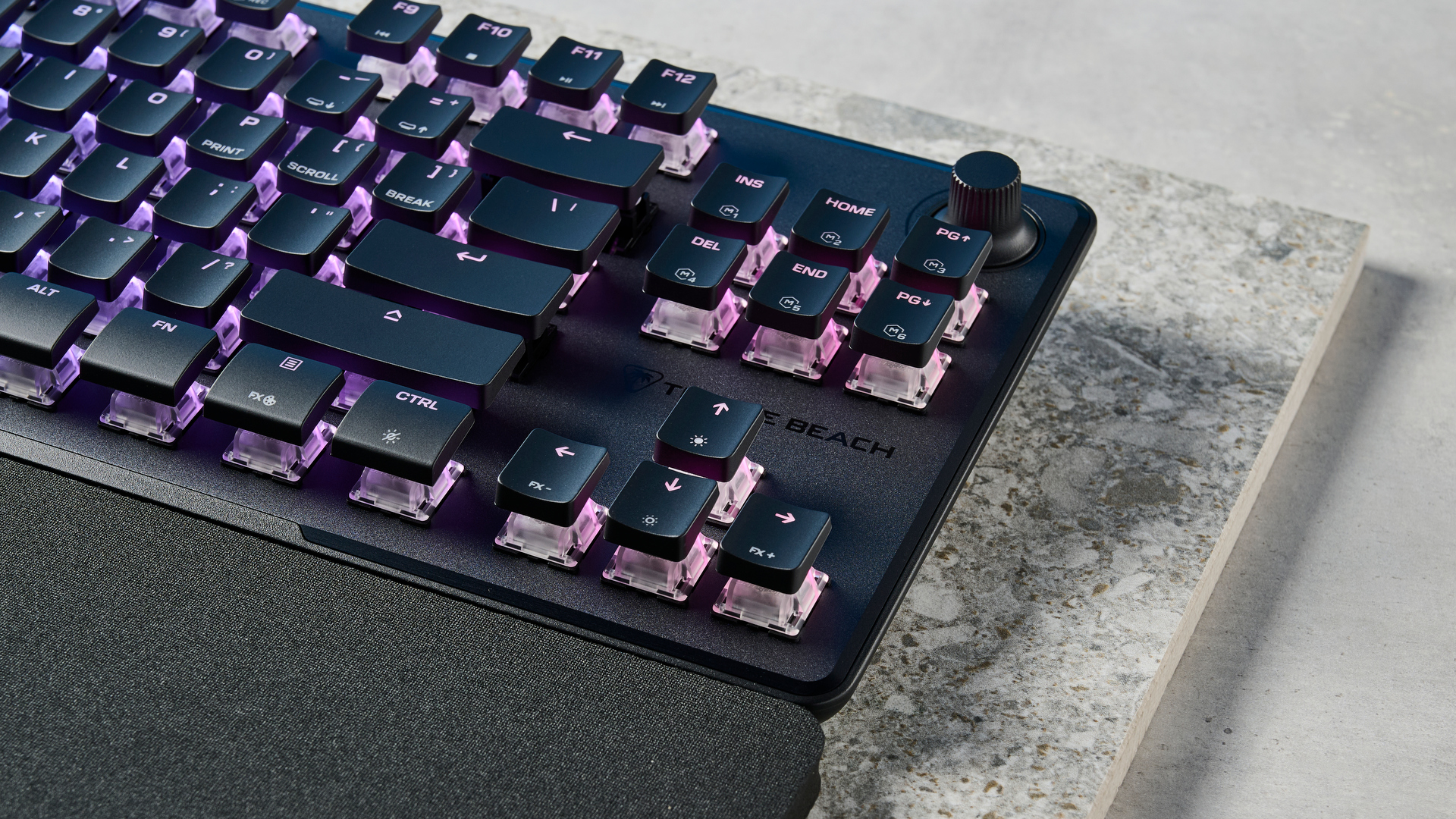
The Turtle Beach Vulcan II TKL Pro has noticeable gaps between its keys, and they can be really annoying if you aren’t used to them. When going for a particular key, my fingers either slotted into the gaps, or they didn’t even make it to the top of the keycap — resulting in missed inputs.
Not only was this an issue while typing (where I found myself making more typos than usual), but it got in the way of gaming too, and I noticed it the most while playing Final Fantasy XV. Many of the combat actions are bound to the keyboard and not the mouse. Executing the finisher at the end of a team combo in FFXV is a quick time event, and it’s something I don’t usually miss.
But boy did the Vulcan II TKL Pro make this difficult. I have to knock a point off for this because if you’re a competitive gamer, you can’t risk your peripherals not registering your actions.
Shiny keycaps

While the matte finish on the ABS keycaps is a nice touch, the Turtle Beach Vulcan II TKL Pro’s keycaps are prone to getting shiny, and they’re fingerprint magnets. I could see my fingerprints about an hour into using the keyboard. Nearly $150 for this? Disappointing.
Cheap feeling wrist rest

For $149, you’d expect the wrist rest that accompanies the Turtle Beach Vulcan II TKL Pro to feel more premium than it does. It’s basically a piece of foam that provides barely any height. Unlike the Asus ROG Strix Scope II 96’s ($179) leatherette wrist rest which magnetically snaps into place, the Vulcan II TKL Pro’s doesn’t. In my testing, the wrist rest didn’t stay in place as intended. It also feels flimsy enough that a swipe with a sharp object would tear it open.
Turtle Beach Vulcan II TKL Pro review: Verdict

In theory, there’s a lot to like about the Turtle Beach Vulcan II TKL Pro. It’s sturdy yet lightweight, which means you can take it with you to competitions. Equipped with Hall Effect magnetic switches, you can quickly change your desired keys’ actuation points (and RGB!) via the detailed Swarm II companion software.
That said, the keyboard has some flaws that can seriously affect competitive gaming. The gaps between the keys led to me not only making typos, but also missing quick-time events and other combat actions — and that’s not something you can afford in MMORPGs. And you might want to switch out the keycaps for better ones, as the stock keycaps are prone to getting shiny quickly.
If you’re looking for an outstanding Hall Effect keyboard, I’d recommend spending a little extra on the SteelSeries Apex Pro Mini ($179) instead. There are better options out there, and alas, the Vulcan II TKL Pro ain’t it.
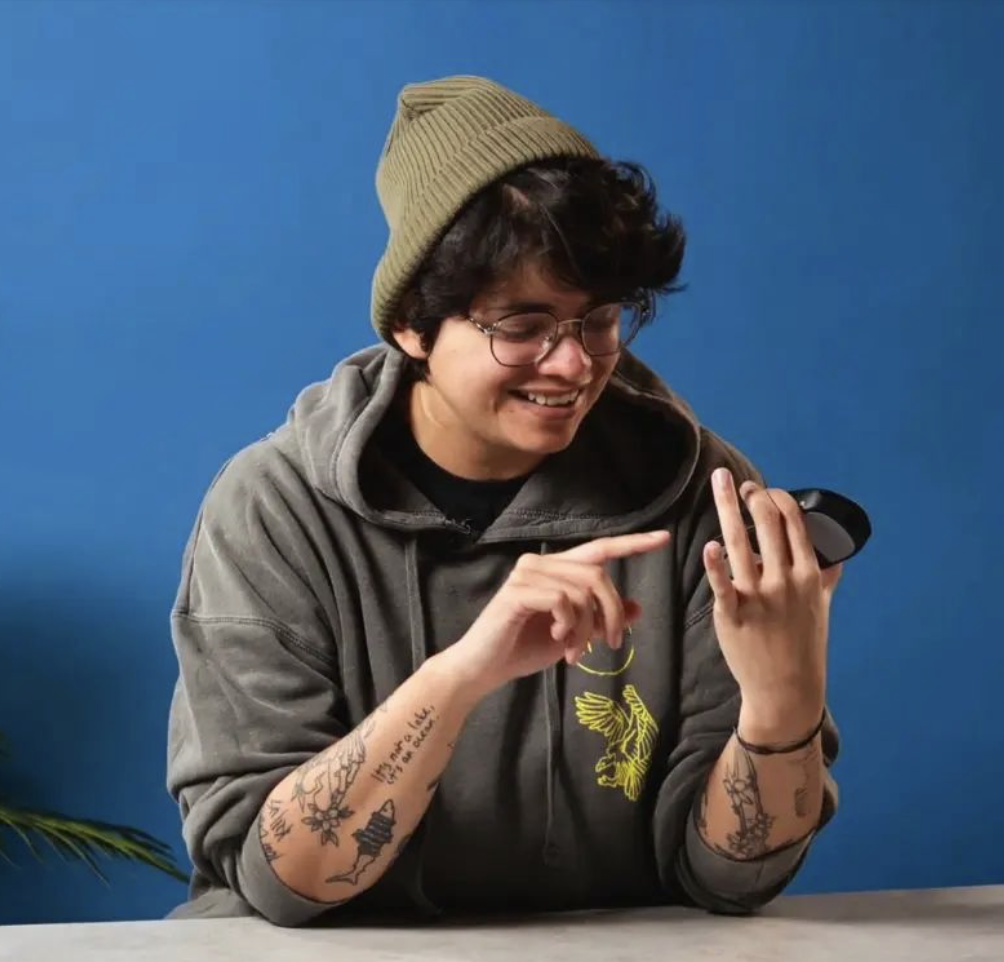
Nikita is a Staff Writer on the Reviews team at Tom's Guide. She's a lifelong gaming and photography enthusiast, always on the lookout for the latest tech. Having worked as a Sub Editor and Writer for Canon EMEA, she has interviewed photographers from all over the world and working in different genres. When she’s not working, Nikita can usually be found sinking hours into RPGs on her PS5, flying a drone (she's a licensed drone pilot), at a concert, or watching F1. Her work has appeared in several publications including Motor Sport Magazine, NME, Marriott Bonvoy, The Independent, and Metro.
